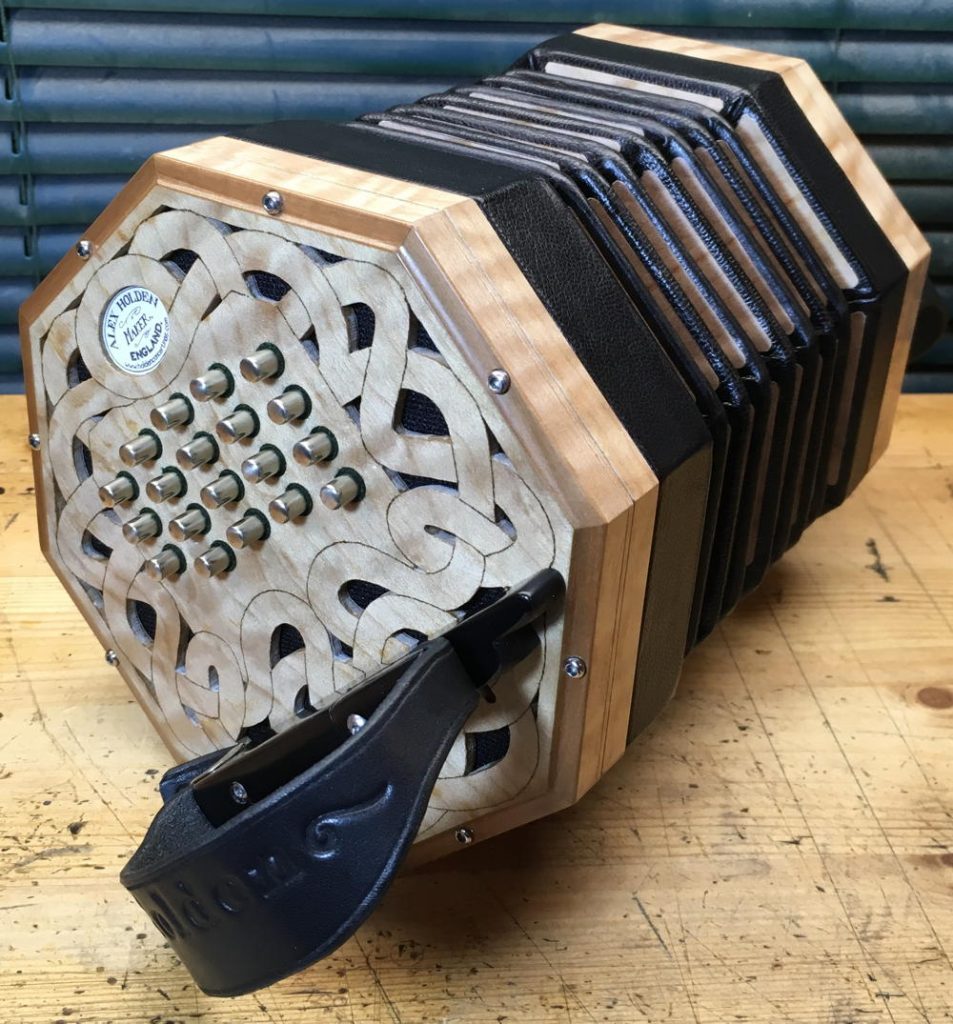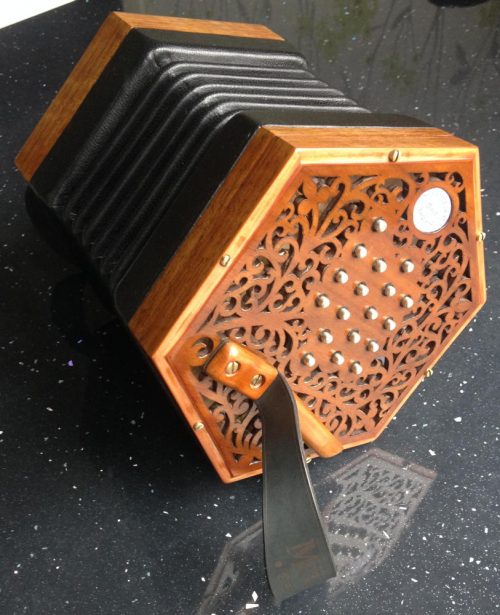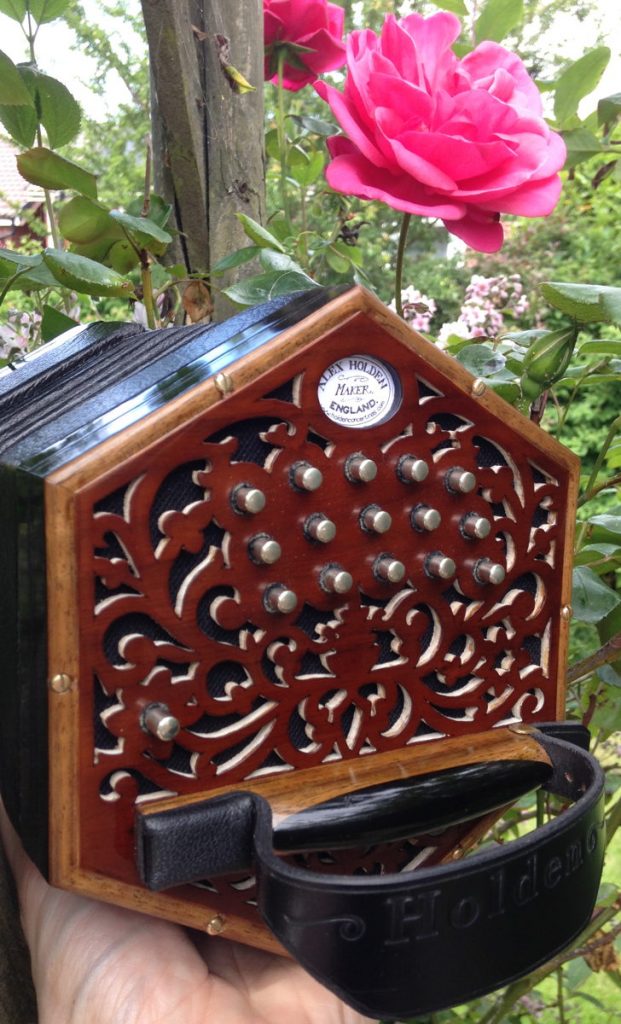A few weeks ago I completed my second new concertina. For pragmatic reasons I chose to build an example of what is probably the most popular type of concertina sold today: the 30 button C/G Anglo in a 6 ¼” hexagonal frame. I decided to name this model (and variations on it) the Holden Blackbird in honour of the small family of blackbirds that sing and dance on the roof of my workshop while I am building instruments (no photos of the birds, unfortunately: they are very camera-shy).
Here is the specification of Holden No. 2, the first of my Blackbirds:
- 31 buttons + air (Wheatstone layout with a middle C drone on the left thumb button).
- 6 ¼” (159mm) wide hexagonal frames.
- Weight: 1290g.
- All parts other than various screws made by myself in England from high quality materials, either by hand or on my little CNC milling machine (everything visible on the outside of the instrument is hand made).
- Traditional long-scale concertina reeds, with hand-filed spring steel tongues closely fitted under a microscope into brass frames. They are loud and responsive with good dynamic range and pitch stability. I don’t like trying to describe tone in words because it is so subjective, but I’d say it has a strong sound without being overly harsh. One player called it, “sort of Jeffries-ish.” I recommend hearing it in person if you can – the iPhone recordings don’t really do it justice.
- Seven fold black goatskin bellows with black leather-effect papers. They are supple and don’t have a tendency to spring open, due to building them freehand without a mould.
- Black Ebano (a sustainable alternative to ebony) action box walls.
- Laminated hardwood end boards (for strength and stability) with American walnut face veneer and a moulded English walnut border. I used different shades of shellac for the central part and the border.
- Hand pierced fretwork to my own traditional-style design inspired by Victorian patterns.
- Sycamore reed pans (rotated parallel-chamber arrangement with variable chamber depths).
- Sycamore action boards.
- Spruce bellows frames with splined corners (for lightness and strength).
- Curved rippled English walnut and Ebano hand rails with leather-cushioned thumb pad.
- The strap clamp screws go into threaded brass inserts (rather than directly into wood as on many vintage instruments).
- Heavy duty black leather hand straps with rounded edges and skived back.
- All exterior woodwork painstakingly French-polished by hand.
- Comfortable 5.7mm diameter buttons with nickel-silver caps over acetal cores. Thumb buttons are slightly taller than the finger buttons for ergonomic reasons.
- Light (about 65g), fast, riveted brass action with phosphor bronze springs.
- Traditional slotted brass end bolts with heads mostly recessed into the frame so they don’t dig into your hands or catch on the lining of the case.
- 21mm diameter air button hole for fast breathing.
- Black mesh fabric behind the fretwork to help keep the interior clean.
…
No. 2: Introducing the Holden BlackbirdRead More »



